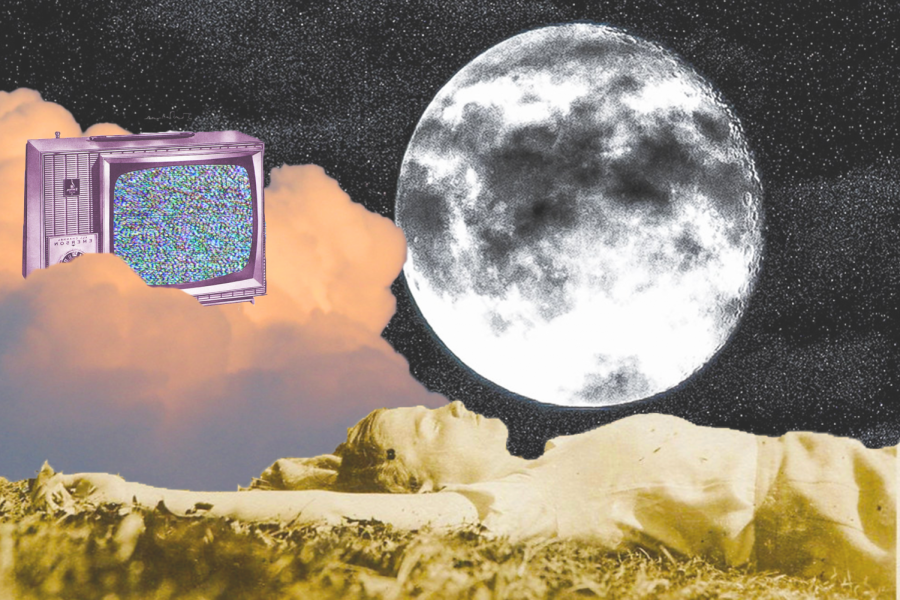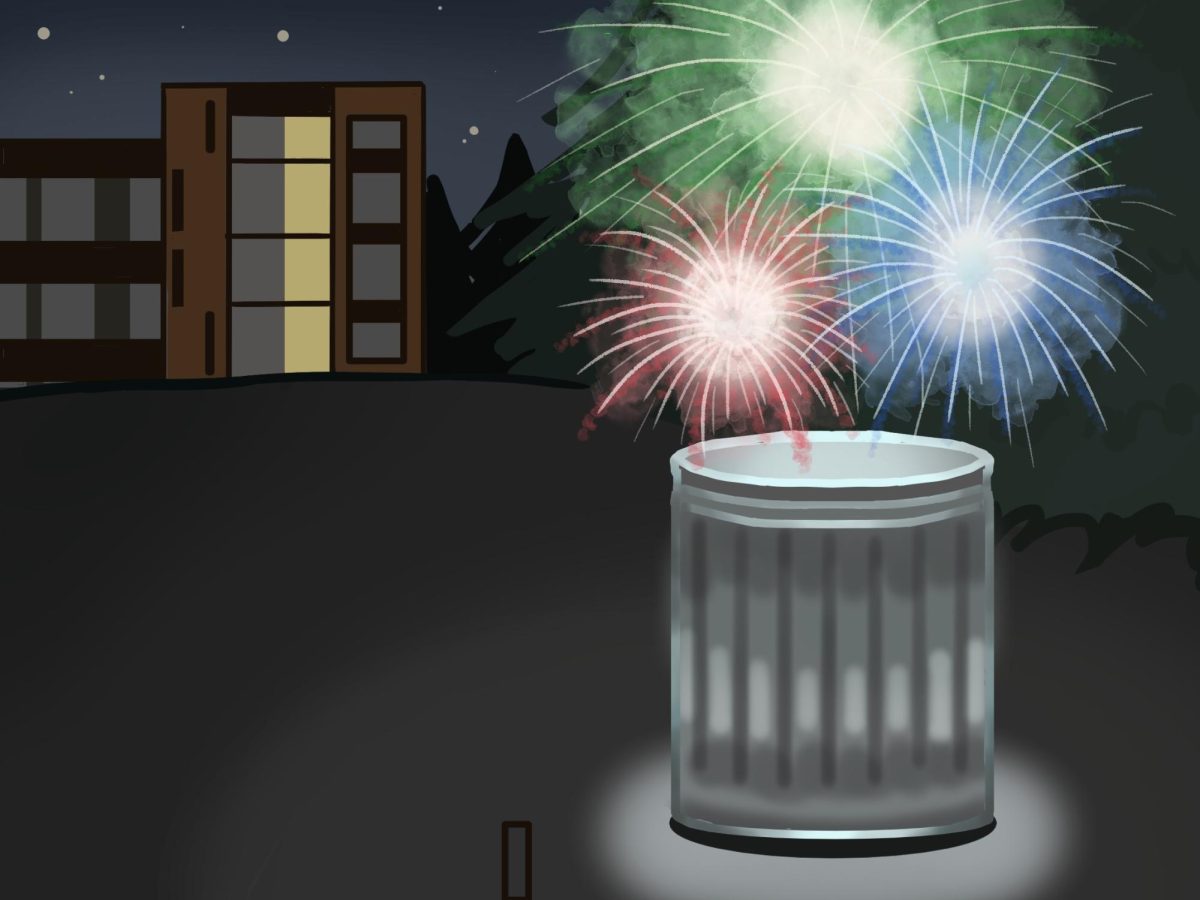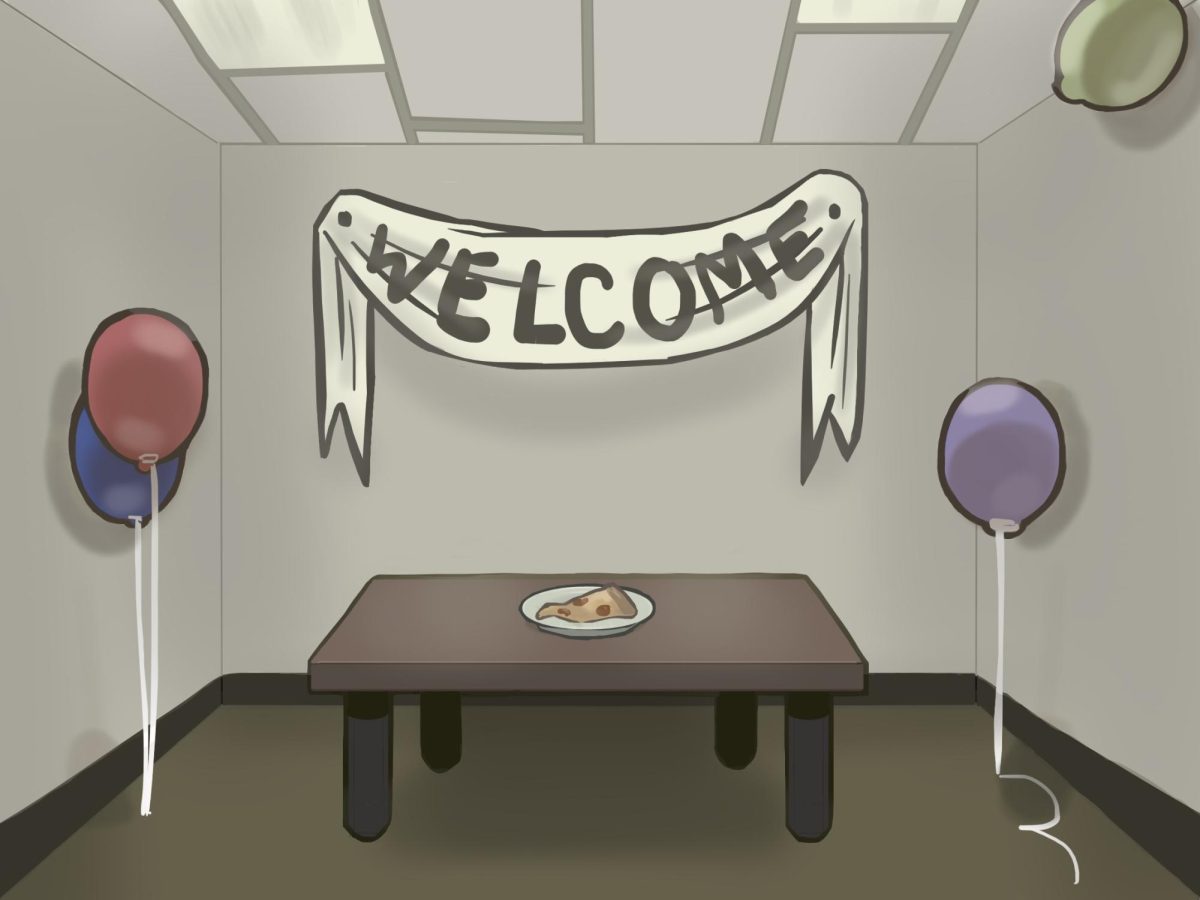Capturing the Dream
Six films and television shows that did justice to the unconscious mind
January 24, 2021
Anyone who’s ever had dreams knows that they aren’t all lush landscapes and fantastical situations. In fact, most of them can be rather understated, landing you in scenarios not unlike waking life aside from an extra dose of uncanniness enough to set the two apart.
Oftentimes, your dreams might take place in a slightly altered version of your local grocery store, or an amalgamation of the neighborhoods you’ve lived in throughout your life. You jump from one setting to another without clear transition, subject to indescribably unique emotions that can range from pleasant to surreal to panicked.
It’s a far cry from the average dream sequence depicted in entertainment, whereby the screen will ripple and present its characters in a whimsical setting filled with amusing high jinks and perfectly coherent conversations. It’s also why the following six titles stand out as having escaped that trope, capturing a realistic slice of what we actually experience when we go to sleep each night.
Note: The following article may contain plot-related spoilers.
“Rosemary’s Baby” (1968)
Set in present-day Manhattan, this horror flick follows the daily life (and eventual pregnancy) of a woman named Rosemary and her actor husband, Guy, having just purchased a new apartment. But when the eccentric older couple next door, The Castavettes, turn out to be a little too affectionate and Guy lands a leading role seemingly by magic, Rosemary gradually grows suspicious and a web of distrust, paranoia and devilish conspiracy ensues.
Seasoned viewers will likely recall the infamous “dream” in which the Castavettes’ sinister plans are executed, but a much subtler sequence occurs toward the beginning of the film when Rosemary and Guy are lying in bed at night. While Rosemary is lightly dozing, the film presents a strikingly true-to-life depiction of what it’s like to be half asleep.
From behind the adjoining wall, the sound of Mrs. Castavette’s loud talking is imagined by Rosemary as coming from the mouth of a nun holding books — an image which, as Rosemary is awakened by a noise, promptly fades into a real-life lamp and book sitting on the shelf above the bed.
When she drifts off again, her point of view appears inside a church. As her ears continue to pick up Mrs. Castavettes loud ranting, she pictures the nun angrily speaking to her while gesturing to broken windows and a group of schoolgirls.
It becomes clear that Rosemary is recalling an incident from her days in Catholic school. A builder is present, too, who reaches downward to Rosemary. As the camera pans to show her back in her bed, she looks upward and fervently recalls to him a memory of getting withdrawn from a competition after telling a Sister of the school “about the windows” — and the scene fades to black.
The sequence is strikingly accurate not only because it captures the most mundane of details that dreams often throw at you, but because everyone has likely experienced a similar situation.
Think about it: Have you ever had real-life sounds or conversations make their way into your dreamscape? Do they seamlessly adapt to the current events that are taking place in your mind? If so, you’ve experienced sensory incorporation: the result of your brain processing external sounds while dreaming.
Sometimes, you might even wake up speaking the tail-end of a sentence leftover from a dream. All of this is what “Rosemary’s Baby” achieved in this seemingly-insignificant moment — and it did so immaculately.
“The Exorcist” (1973)
https://www.youtube.com/watch?v=TD0RJ_iuBPo
“Rosemary’s Baby” wasn’t the only film to juxtapose supernatural themes against an urban backdrop. The premise is simple: Set in Washington, D.C., “The Exorcist” tells the story of 12-year-old Regan who gradually becomes possessed by a demon. When her mother realizes that extensive therapy isn’t helping, she solicits the help of a priest, Father Karras, to perform an exorcism.
Despite his recent contemplations of leaving the church, Karras accepts the challenge.
It is his pivotal dream sequence which I have always found infinitely more chilling than any of the traditional horror the film has to offer. Following the death of his elderly mother, Karras’ dream lands him on one end of a bustling Manhattan crosswalk during the day as his mother slowly emerges from a subway entrance across the street.
Right away, the lack of sound is tangible — all that is audible throughout the sequence is Karras’ real-life breathing, along with faint, distorted noises of what could be the streets below the apartment he’s sleeping in.
As Karras begins to wave and call out to his mother, she merely shakes her head and mouths “help me” in response. After a jarring split-second image of the film’s infamous demonic face flashes across the screen, his mother slowly descends into the depths of the subway as Karras attempts to sprint across the road to reach her.
The scene has all the ingredients of a nightmare. As the sense of impending dread contradicts the unassuming setting, it’s topped off with frightening imagery and of course, that familiar feeling of not being able to run quite fast enough.
“The Sopranos” (1999-2007)
Since its debut in 1999, “The Sopranos” has reigned as one of the most iconic American television dramas of all time. Chronicling the day-to-day affairs of its namesake mafia family in New Jersey, the show put a new spin on the beloved “mob” genre by having its protagonist, the lovable-yet-hardened crime boss Tony Soprano, see a psychiatrist.
The series incorporated quite a few of Tony’s dream sequences throughout its six-season run, including an almost claustrophobic episode that depicted his feverish stint in a coma. But More often than not, his dreams were rather ordinary — which is what made them so plausible.
In one example can be witnessed in season two’s “Funhouse,” in which he’s heading down a deserted waterfront boardwalk. Upon closer examination of the background, Tony isn’t gaining any ground at all, almost as if he’s walking on a moving sidewalk that’s going backward.
After a brief and disjointed brush-up with his consigliere, Silvio, Tony’s point of view swiftly floats over to a telescope where he looks inside and sees a faraway view of himself playing cards with his underboss, Paulie, in an empty train station.
The scene proves that minimalism is key. From the deserted settings to the liquidity of movement right down to the subtle details of the boardwalk squeaking (which it wouldn’t logically have reason to do in real life), conditions are just “off” enough to be able to distinguish from reality.
“Carrie” (1976)
Brian DePalma’s enduring adaptation of this Stephen King novel follows the life of a sheltered high school student named Carrie White who discovers she has telekinetic powers. After the introverted Carrie is bullied in gym glass by a group of popular girls, one of them, Sue Snell, takes pity on her and arranges to have her boyfriend, Tommy Ross, ask Carrie to the prom — but the rest of the clique aren’t as forgiving.
When Carrie and Tommy are crowned prom king and queen, a bucket of blood is released onto Carrie. An explosive conclusion sees Carrie destroying the school gym and its occupants, including those who sought to help her. When she returns home, her powers reach a breaking point and the house implodes on herself and her mother.
In a glowy dream sequence at the end of the film, Sue, who survived the carnage, returns to the now-daytime scene and remorsefully approaches the former residence — which is now but an empty lot covered in rocks with a single gravestone for Carrie in the center.
The wistful music that plays is deceiving of things to come: the moment Sue kneels down to leave the flowers, Carrie’s arm shoots out of the ground and grabs her. Sue wakes up screaming in fear as her mother runs to comfort her, but for a moment, Sue still sees Carrie’s arm grasping hers through the bedsheets.
Of course, Sue’s nightmare was the result of mental trauma; but it’s also a spot-on depiction of what fever dreams can be like. In the half-awake or fevered state of mind, it’s not uncommon for dream imagery to briefly stick around the form of real-life objects — not unlike how you might dream of finding $100 in cash on the ground only to wake up clutching your blanket.
“8½” (1963)
In September 2017, I dreamed that I was part of a recurring scenario in which I would repeatedly glide out of the sky on a sunny day, down toward a beach. Sometimes I could hear a murmur of voices in my ear, while other times there would only be the sound of wind whistling past — a detail which provided an eerily lonesome quality.
The dream sequence that kicks off Federico Fellini’s “8½” holds a unique resemblance.
It begins unassumingly enough, as a man sits in standstill traffic in a tunnel. But it isn’t long before things go awry. Suddenly, fumes begin to fill his car through the air vent. As he struggles to breathe, passengers in neighboring cars look on with indifference; most of them eerily frozen in place.
The man eventually exits his car through the roof and — after an admittedly cliché transition where flies through the clouds — the scene takes on a purely unique quality once again.
Much like my own dream, it cuts to the protagonist’s point of view, suspended high above the shore of a beach. Similarly, it is the absence of sound that drives home the eerie atmosphere. His foot is attached to a kite string that is being held by a man down below, but there are no immediate threats beside the nature of his solitude up in the sky.
Soon, he begins to fall. During his descent, he becomes audibly out of breath in waking life before promptly shooting awake. It’s a familiar scenario: not only the feeling of adrenaline we’ve all experienced when falling from great heights in dreams, but waking up as a direct result.
“The Twilight Zone” (1959-1964)
Season 2, Episode 17: “Twenty-Two”
The events of “Twenty Two” revolve around Liz Powell, a performer hospitalized due to overwork. Each night, she awakens to reach for a glass of water which falls to the ground and shatters. Following this, she hears footsteps outside her hospital room and is hesitantly compelled to go investigate. When she takes the elevator down to the basement and approaches the morgue, the doors swing open and a nurse tells her “room for one more, honey.”
I might be partial to this episode because I have dreams involving elevators what feels like every other night, but even so, “Twenty-Two” does an excellent job establishing setting. In a nightmare, not much is worse than the tangible terror that envelopes you when you’re alone in a strange building, navigating hallways, basements and doors where you never know what might be on the other side.
The fictionalized aspect of “Twenty-Two” is that Liz’ dream ends up prophesizing a fatal accident that she narrowly avoids after leaving the hospital. But all of the themes that precede this do justice to the unconscious mind.
Season 1, Episode 9: “Perchance to Dream”
https://www.youtube.com/watch?v=k4rXHuVq9f4
I once dreamed that I possessed the ability to fly, so I pushed open the shutters of a large window that overlooked city streets I planned to fly over. But as I stood in the window frame, I reconsidered jumping — all of a sudden it truly felt like if I failed and fell to the ground instead, it would result in my real-life death; so I opted not to risk it.
It was a predicament not unlike the one presented in “Perchance to Dream,” in which a man enters his analyst’s office claiming to be hunted in his sleep by an alluring carnival performer known as “Maya the Cat Girl.” After awakening to find that the woman was his analyst’s secretary, he runs and jumps from the window.
The realism of this episode lies not in the dramatic scenes at the carnival he recalls to his analyst, but in the philosophical discourse about the mind that takes place during the office scenes. The story raises an interesting (albeit fable-esque) question: Do we control our dreams, or do they control us?
Season 2, Episode 26: “Shadow Play”
https://www.youtube.com/watch?v=TOCITuqlQ04
Have you had a dream so real you could swear it’s really happening? What about one that repeats itself? That’s the dilemma that Adam Grant faces in “Shadow Play.” In his recurring dream, he’s charged with murder and sent to death row to be executed on the electric chair; except he’s lived out the scenario coutnless times before — in his mind.
The inmates in the neighboring jail cells are oblivious to Adam’s concerns, so at one point he tries to illustrate his point by describing how everything about the trial is “a little bit too much the way it should be” — that getting tried and sentenced on the same day doesn’t happen and that “jails don’t look like this.”
“It’s like a movie,” he says, explaining how he’s never actually been to death row, therefore his surroundings are merely his impression of what it would be like.
When the district attorney visits him in jail and tries to play to Adam’s logic by pointing out how he’ll wake up anyway, Adam explains that it’s the very real pain he experiences that’s driving him crazy. To prove his argument, Adam tells the district attorney that his wife is cooking steak at home, which she had been in a previous scene. To prove his control over this reality, Adam tells him to go and look in the oven; that it will be something else — and it is.
During a visit from a priest, Adam recognizes his face from a real-life memory which leads him to wonder where he’s seen the district attorney’s face before — a subtle nod to the theory that suggests strangers in your dreams may be inspired by actual faces you’ve seen in waking life.
The episode heavily references lucid dreams and how powerful they can be. Have you ever found yourself in a situation where you’ve been able to tell someone in your dream, “I’m dreaming,” with a heightened sense of awareness? It’s a strange experience, which can feel so real at the time.
As far as dreams go, these productions excelled at what they set out to achieve. They prove that the successful dream sequence in entertainment doesn’t need to merely exist as a device to sidestep into an elaborate fantasy, but that it should instead serve — and be reserved — as a means to reflect the unique wonders of the sleeping mind.
What are your favorite dream sequences in film and television? Let us know in the comments below!







